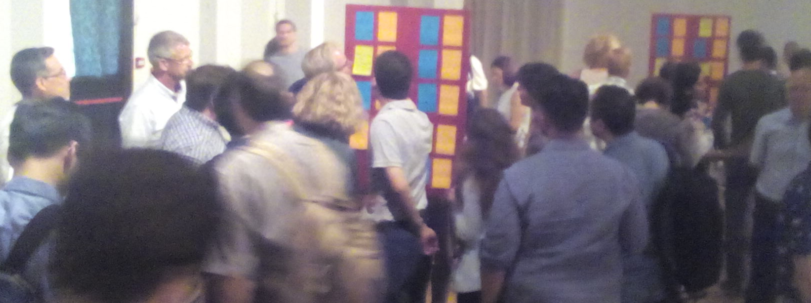A disturbing trend emerged during both LODLAM 2017 in Venice, Italy and Digital Humanities 2017 in Montreal, Canada concerning Linked Open Data and the semantic web in general. Both conferences were chalk-full of projects that were either creating data or thinking of publishing their data as Linked Open Data, but very few projects dealt with the consumption of the data. When the topic of consuming LOD is discussed, it is in the context of faceted search or schema.org style discovery. This is problematic because we are not leveraging the linkages of the data and the work done within the project ontologies. And... who really wants to look at triples? The Linked Open Data tools available so far (Pelagios Commons, Trench Map Converter) tend to be highly integrated with the data of the organization that created it, if we are to move on with this technology we need tools that apply to multiple datasets.
 The LODLAM 2017 session Cool tools was well attended by over 30 people crowding around the tables in the Salone Degli Arazzi about cool tools to consume LOD. Oddly, most of the tools discussed were still of the backend or engineering variety. With production getting so much attention, the lack of thought about consumption is concerning: What do we expect end-users and scholars to do with this data? When asked what tools they would like to see, the session members still talked about workflow toolchains and backend facing processes. This isn't unexpected as LAM practitioners worry about their day to day responsibilities first and foremost. Enrichment and creating linkages were similarly popular topics as people wanted to cross-link their datasets on a larger scale than is possible with manual methods. For all of the work entailed, it is all primarily a straight-forward engineering problem.
The LODLAM 2017 session Cool tools was well attended by over 30 people crowding around the tables in the Salone Degli Arazzi about cool tools to consume LOD. Oddly, most of the tools discussed were still of the backend or engineering variety. With production getting so much attention, the lack of thought about consumption is concerning: What do we expect end-users and scholars to do with this data? When asked what tools they would like to see, the session members still talked about workflow toolchains and backend facing processes. This isn't unexpected as LAM practitioners worry about their day to day responsibilities first and foremost. Enrichment and creating linkages were similarly popular topics as people wanted to cross-link their datasets on a larger scale than is possible with manual methods. For all of the work entailed, it is all primarily a straight-forward engineering problem.